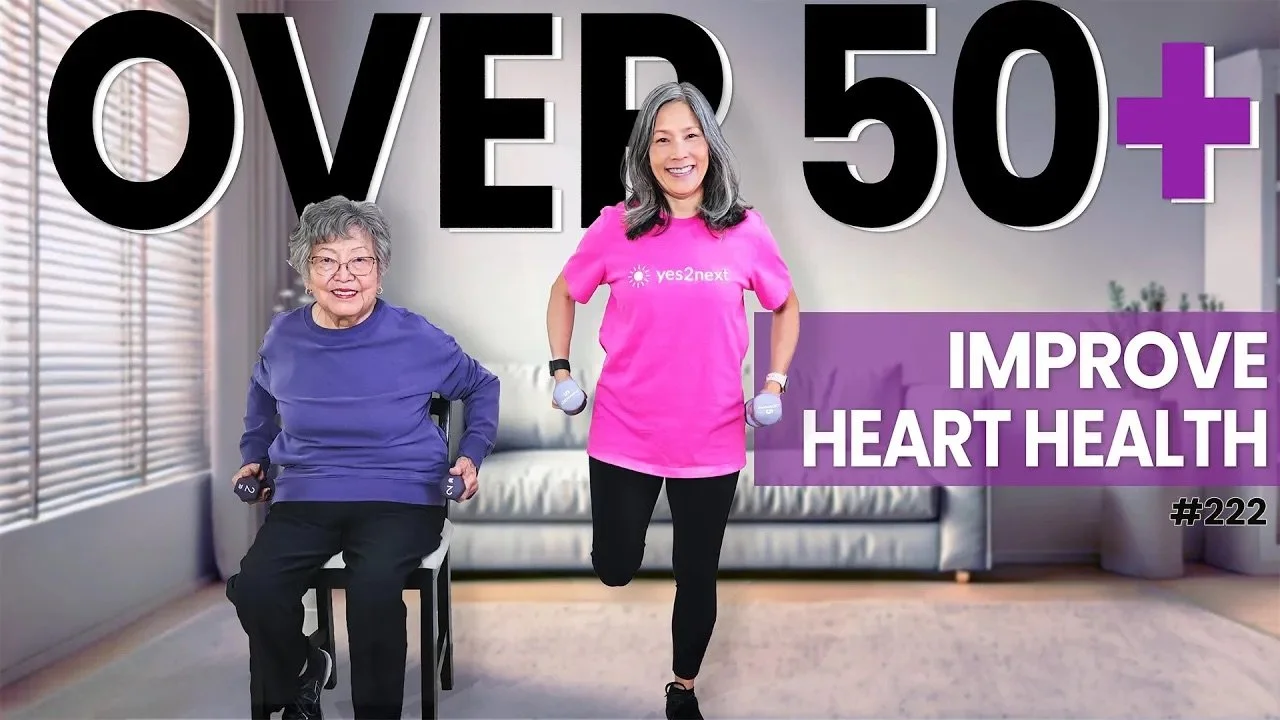Boost Your Heart Health: 20 Minute HIIT for Seniors
Heart disease is the leading cause of death in the U.S. and worldwide, according to The World Health Organization (WHO). While some risk factors—such as family history, sex, and age—are beyond our control, there are several lifestyle behaviors that you can adopt to reduce your risk, according to the Mayo Clinic. Physical activity, in particular, offers numerous health benefits and is one of the best things you can do to improve your heart health. A well-rounded exercise program should include three types of training: aerobic exercise, resistance exercise, and activities to improve flexibility. Today, we’re going to hit all three in our 20 Minute High Intensity Interval Training (HIIT) workout.
The Benefits of Exercise for Heart Health
Aerobic exercise, also known as cardio, increases your heart rate and the amount of oxygen your body uses. This type of exercise strengthens your heart and lungs, improving overall cardiovascular health. Examples of aerobic exercises include running, cycling, swimming, and even brisk walking.
Strength training, or resistance exercise, involves working your muscles against a force. This can be done using free weights, resistance bands, or even your body weight. Strength training has been shown to reduce the risk of heart attack or stroke by up to 70%, according to a recently published study. It also helps lower blood pressure, improve cholesterol levels, and increase insulin sensitivity, which can prevent diabetes.
Flexibility exercises, such as stretching or yoga, are often overlooked but are crucial for overall fitness. They improve the range of motion in your joints, reduce the risk of injury, and enhance muscular coordination. Incorporating flexibility work into your routine can help you perform better in both aerobic and strength training activities.
The Heart Healthy HIIT Workout: Combining Cardio, Strength, and Flexibility
HIIT workouts are an excellent way to combine all three types of exercise into a single, efficient routine. HIIT involves short bursts of intense exercise followed by periods of rest or low-intensity activity. This approach not only saves time but also maximizes the benefits of your workout.
Our 20 Minute Heart Healthy HIIT Workout features 25 second rounds of alternating cardio and strength exercises with 20 second rest rounds.
This workout can be done without any equipment, but feel free to pick up weights if you’re up for a challenge. I’ll be using 5-pound weights, while my mom uses 2 and 3-pound weights. If you perform this workout at a high intensity, aim to do it 2-3 times a week with at least a day of rest in between sessions. If you prefer a lower intensity, you can do this workout every day.
Why HIIT Works
HIIT workouts are highly effective because they increase your heart rate quickly and keep it elevated throughout the session. This promotes better cardiovascular fitness and burns more calories in a shorter amount of time compared to traditional steady-state cardio. Additionally, the intense nature of HIIT stimulates muscle growth and improves strength, making it a comprehensive workout option.
Final Thoughts
Regular exercise is essential for maintaining a healthy heart and reducing the risk of cardiovascular diseases. By incorporating aerobic exercise, strength training, and flexibility work into your routine, you can improve your overall fitness and heart health. Our HIIT workout is a time-efficient and effective way to achieve these benefits. So, grab your weights, find some space, and let’s get started on improving our heart health together!
Remember, consistency is key. Whether you’re a beginner or an experienced exerciser, adapting your workout to your current fitness level and progressing gradually will help you stay motivated and see continuous improvements.
Let's get started and improve our heart health together! 💪❤️
Want more HIIT workouts? Check out our HIIT playlist!
Stay up-to-date on our latest workouts and news! Sign up for our email list in the footer below.

